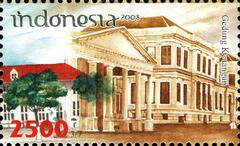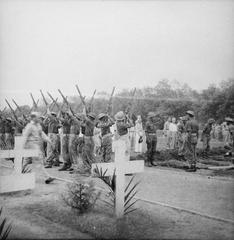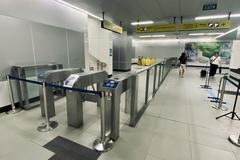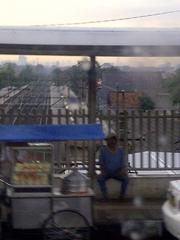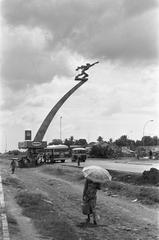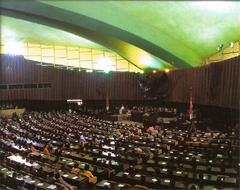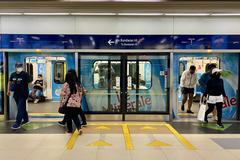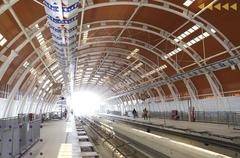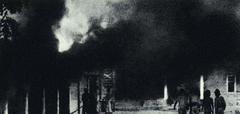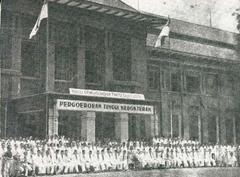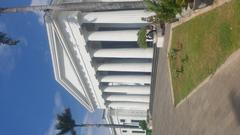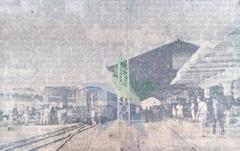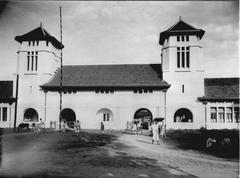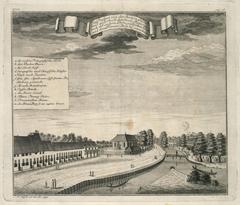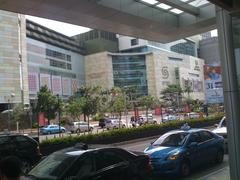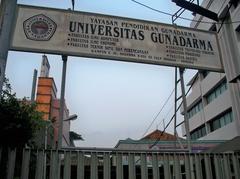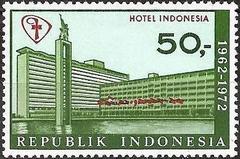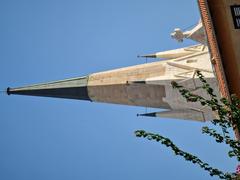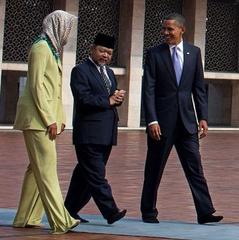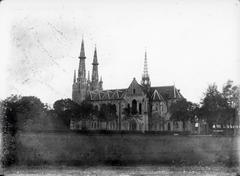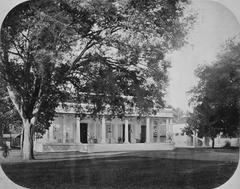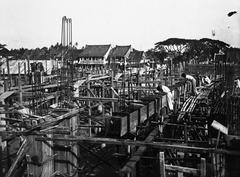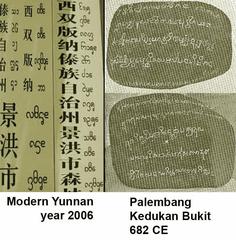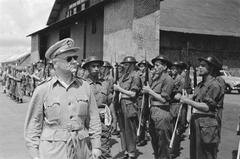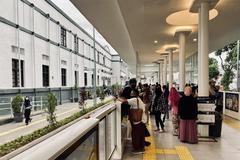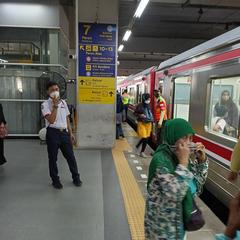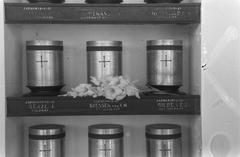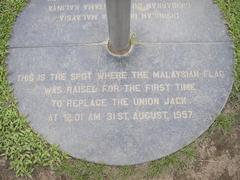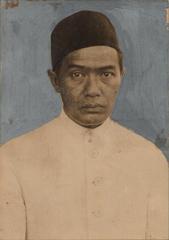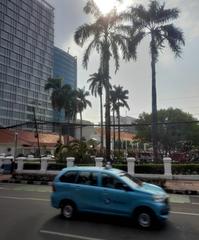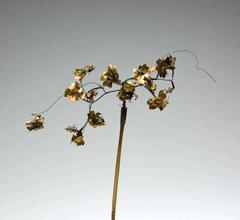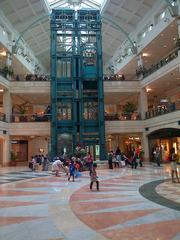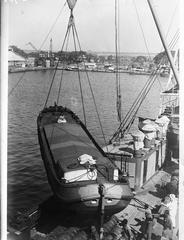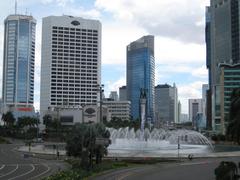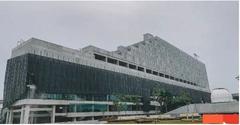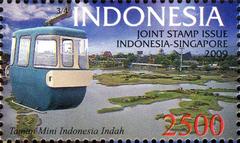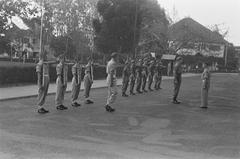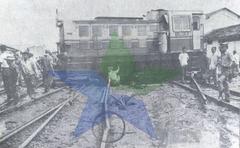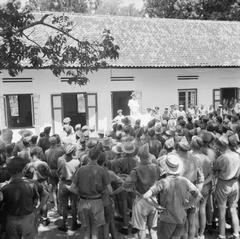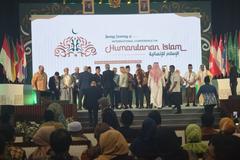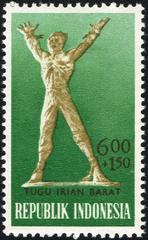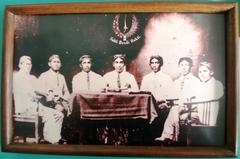Karet Bivak Cemetery Jakarta: Visiting Hours, Tickets, and Historical Significance
Date: 04/07/2025
Introduction
Karet Bivak Cemetery (Taman Pemakaman Umum Karet Bivak), located in Jakarta’s bustling Tanah Abang district, is one of Indonesia’s largest and most culturally significant burial grounds. Spanning over 16 hectares, it houses nearly 100,000 graves, including those of notable national figures such as Fatmawati Soekarno, Chairil Anwar, and Benyamin Sueb. Beyond its function as a cemetery, Karet Bivak stands as a reflection of Jakarta’s pluralistic society, a place where diverse communities and traditions converge.
This guide presents a comprehensive overview of Karet Bivak’s historical context, practical visitor information, cultural customs, and travel tips, ensuring a meaningful and respectful visit for both locals and tourists. For more detailed planning and background, consult trusted resources such as Tribun Tangerang, Wikipedia, and Kompas Travel.
Table of Contents
- Introduction
- Historical Background
- Location and Accessibility
- Layout and Notable Sections
- Visitor Information (Hours, Admission, Accessibility)
- Facilities and Amenities
- Navigating the Cemetery
- Cultural Significance and Social Practices
- Preservation and Management
- Practical Travel Tips
- Frequently Asked Questions (FAQ)
- Conclusion and Key Takeaways
- References and Further Reading
Historical Background
Origins and Development
Karet Bivak Cemetery originated from a former rubber plantation, transformed into a public cemetery during Jakarta’s post-independence urban expansion (Tribun Tangerang). Established in 1977, it addressed the urgent need for burial space amid the capital’s fast-paced growth. Today, Karet Bivak is a microcosm of Jakarta’s social and religious diversity, with sections for Muslims, Christians, and other faith groups (Wikipedia).
Capacity and Expansion
Spanning approximately 16.2 hectares, Karet Bivak is Jakarta’s second-largest cemetery, containing upwards of 48,000–100,000 graves (Detik News). Due to space constraints, new burial plot allocations have been limited since 2017, and family “stacking” is now common practice (Taipei Times).
Social and Economic Dimensions
Karet Bivak is accessible to all social strata, with modest burial fees (10,000–25,000 rupiah for a three-year license). However, these costs remain a challenge for some, leading to charitable involvement in funeral rites (Jakarta Post). The cemetery’s layout and headstone styles reflect this socioeconomic diversity.
Modernization and Preservation
Efforts to standardize grave markers began in 2009, requiring plain gray headstones to improve aesthetics and environmental sustainability. While these reforms aimed to enhance the cemetery’s appearance and water absorption, they sparked debate due to lack of notification and errors in implementation (Wikipedia).
Location and Accessibility
Karet Bivak Cemetery is centrally located at Jl. Karet Pasar Baru Barat, Karet Tengsin, Tanah Abang, Jakarta Pusat, with coordinates approximately -6.2029729, 106.8137632 (Mapcarta). The site is highly accessible:
- By Train: Walking distance from Stasiun Karet and Stasiun Sudirman.
- By Bus: Close to several TransJakarta stops (Corridor 1 to Tanah Abang).
- By Car: Limited parking is available; public transport is recommended during peak periods.
- Nearby Attractions: Tanah Abang Market, Museum Taman Prasasti, and Sudirman Central Business District (kamboja.co.id).
Layout and Notable Sections
The cemetery is divided into blocks (“blad”), with main avenues and secondary paths forming a grid. Notable features include:
- Taman Makam Tokoh Bangsa: Opened in 2022, this modern section honors national figures.
- National Heroes’ Graves: Marked with Indonesian flags and bamboo poles, these include Fatmawati Soekarno, Chairil Anwar, Ismail Marzuki, and others (HelpMeCovid).
- Rest Areas and Gardens: Shelters and benches are scattered throughout, providing respite and gathering points.
Directional signage and maps are available at the entrance and main office. For specific grave locations, administrative staff can assist using burial records (Detik News).
Visitor Information
Visiting Hours
- Open: Daily, 6:00 AM – 6:00 PM (Kompas Travel).
- Best Time: Early mornings or late afternoons for a quieter, cooler experience.
Admission
- Fee: Free of charge; no ticket required.
- Donations: Optional, for maintenance.
Accessibility
- Main Pathways: Wheelchair-accessible and paved.
- Assistance: Electric car services available during peak periods for elderly and disabled visitors (VOI News). Contact management for additional needs.
Facilities and Amenities
- Restrooms and Mushola: Located near the entrance (HelpMeCovid).
- Shelters and Seating: Provide shaded rest spots.
- Flower Vendors: Offer flowers and rose water for traditional rituals (Detik News).
- Caretaker Services: Staff and caretakers assist with grave location, maintenance, and information.
Navigating the Cemetery
The cemetery’s size can make navigation challenging. Blocks are numbered or named, and signage is present at intersections. Maps are provided at the main office, and digital resources are available (BillionGraves). If you lose track of a grave, staff can help by searching records with the date of death or name (Detik News).
Cultural Significance and Social Practices
Reflection of Pluralism
Karet Bivak represents Jakarta’s pluralism, accommodating various religious and cultural traditions. The diversity is evident in the range of headstone styles—Muslim, Christian, and Chinese markers are all present.
Rituals and Commemorative Events
During Ramadan, Idul Fitri, and Idul Adha, families gather for nyekar—cleaning graves, reciting prayers, and decorating with flowers (observerid.com). On National Poetry Day (April 28), poetry enthusiasts honor Chairil Anwar’s legacy (Kompas Travel).
Social Impact
The cemetery provides urban green space, supports a micro-economy of flower vendors and caretakers, and hosts community events that foster cultural awareness.
Preservation and Management
Facing land scarcity, Karet Bivak utilizes a stacked burial system, allowing multiple family members in one plot. Grave leases must be renewed; otherwise, plots may be reassigned (kamboja.co.id). The Central Jakarta Parks and City Forest Service oversees maintenance, cleanliness, and ongoing reforms to preserve the site (HelpMeCovid).
Practical Travel Tips
- Arrive Early: Especially during holidays, to avoid crowds.
- What to Bring: Flowers, incense, water, sun protection, and comfortable shoes.
- Dress and Behavior: Dress modestly, behave respectfully, and observe local customs.
- Photography: Allowed, but seek permission if families are present.
- Use Facilities: Take advantage of restrooms, shelters, and electric car services if needed.
- Security: Watch belongings during crowded events.
Frequently Asked Questions (FAQ)
Q: What are the opening hours?
A: Daily, 6:00 AM – 6:00 PM.
Q: Is there an entrance fee?
A: No, admission is free.
Q: How do I get there by public transport?
A: Walk from Stasiun Karet/Sudirman or use nearby TransJakarta stops.
Q: Are guided tours available?
A: Not regularly, but staff and caretakers can assist; local organizations offer tours for special events.
Q: Is the cemetery accessible for people with disabilities?
A: Main paths are wheelchair accessible; electric car service is available during busy periods.
Q: Can I take photographs?
A: Yes, but ask permission if photographing graves with visitors present.
Conclusion and Key Takeaways
Karet Bivak Cemetery is a vital part of Jakarta’s historical, cultural, and social landscape. Its well-maintained grounds, accessibility, and cultural richness make it both a solemn place of remembrance and a vibrant community space. With free admission, daily visiting hours, and proximity to public transport and city attractions, Karet Bivak is an inviting destination for those seeking to connect with Indonesia’s heritage. By observing local customs and planning your visit thoughtfully, you can ensure a respectful and enriching experience.
For more insights and updates, explore VOI News, Detik News, and the Audiala app.
References and Further Reading
- Karet Bivak Cemetery Visiting Guide: History, Hours & Things to Know at Jakarta’s Historic Burial Site – Tribun Tangerang
- Karet Bivak Cemetery – Wikipedia
- Visiting Karet Bivak Cemetery: Hours, Tickets, History, and Travel Tips in Jakarta – HelpMeCovid
- Karet Bivak Cemetery Visiting Hours, Tickets, and Cultural Significance in Jakarta – Ekaputra Wisata
- Karet Bivak Cemetery Visiting Hours, Tickets, and Guide to Jakarta’s Historical Site – Kamboja.co.id
- 2 Makam yang Paling Sering Dikunjungi di TPU Karet Bivak – Kompas Travel
- Saat Peziarah di TPU Karet Bivak Lupa Letak Kuburan Kerabat – Detik News
- From cradle to grave, life and death never easy for poor people in Jakarta – Jakarta Post
- Guided tours and accessibility information – VOI News
- Visiting Graves: A Lebaran Tradition – ObserverID
